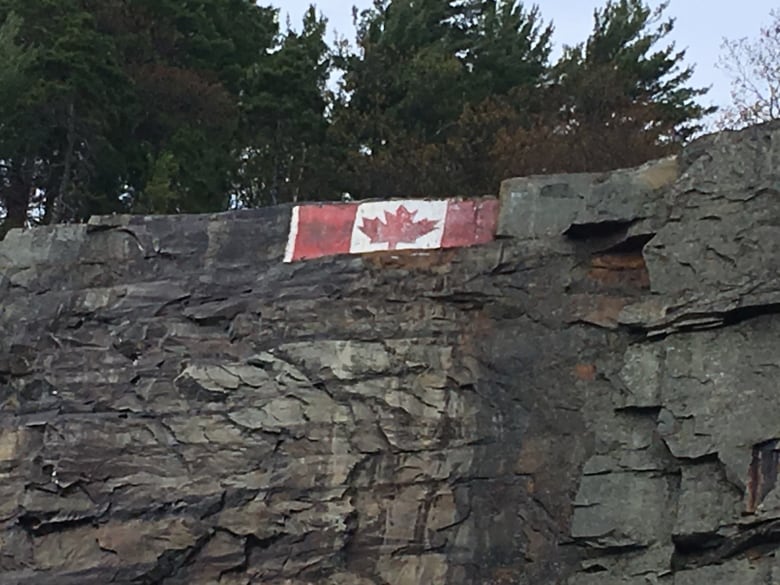Close to 100 sacred pictographs in Ontario park vandalized with spray paint
Graffiti at Matinenda Provincial Park constitutes 'cultural alienation,' says Indigenous leader

When Isaac Murdoch recently visited Matinenda Provincial Park near Elliot Lake, Ont., approximately 50 kilometres from his Anishinaabe community of Serpent River, he was shocked to see some pictographs with graffiti surrounding them.
"I've seen them in that shape a couple of years ago, and I went back just recently and noticed new spray painting," said Murdoch, an Indigenous artist and environmentalist.
They [vandals] don't regard the sacredness of it like we do; those are our ancient stories.- Chief Reg Niganobe
"I recall about 100 [pictographs] in the early days. It is one of the most prolific pictographs that we probably had on the Great Lakes."
Murdoch said now, he's aware of only five pictographs that remain untouched by the surrounding spray paint.
The pictograph site is within the boundaries of Matinenda Provincial Park, a non-operating park managed by Ontario's Ministry of Natural Resources and Forestry. A non-operating park means there's no staff on site and park access and facilities are limited.
"Sacred sites are important things and, for many people, they are strongholds of our past," said Murdoch.
The pictograph site has been a meaningful place to several other surrounding Anishinaabe communities along the north shore, he added.
Photos of the defaced site were posted on social media, where many people expressed outrage.

'These vandals will likely get away with it,' says chief
Chief Reg Niganobe of Mississauga First Nation, a community near Matinenda Provincial Park, said the pictographs have always been a part of his people's history.
Ceremonies are still being held with regards to the pictographs, which are approached with the utmost reverence as well as with offerings, said Niganobe.
- Aboriginal pictographs digitally enhanced back to life
- Kootenay pictographs vandalized with paintball pellets
Still, Niganobe believes trying to catch the vandals would be difficult. The area is teeming with cottagers, tourists and local residents, something the Indigenous people have seen only increase in recent decades, he said.
"These vandals will likely get away with it," Niganobe said.
He added that he believes vandalized mosques garner more anger and disappointment from society.
"We could draw more awareness to it. That way, more people will be watching for it," he said.
At the same time, Niganobe fears that heightened attention to the problem may incite even more acts of vandalism.
Whoever the vandals are, Niganobe said he would like to see it stopped immediately.
"They [vandals] don't regard the sacredness of it like we do; those are our ancient stories," he said.

According to the Ministry of Natural Resources and Forestry, park staff reported the vandalism to the Blind River OPP on May 24, following a visit to the site.
Park staff found older graffiti as well as more recent graffiti and vandalism present on the rock face. It doesn't look like the pictographs themselves were affected by the graffiti, the emailed statement reads in part.
The East Algoma OPP Blind River detachment is investigating the case, along with Mississauga First Nation Police.
Cultural alienation, resistance in reconciliation
Ontario Regional Chief Isadore Day said the vandalism of the pictograph site needs to be called for what it is.
"What happens when there is such disregard and … I think we should put a name on it, and I would call that cultural alienation," Day said.
It's a form of an assault, he added.

"I think there's a bigger issue at hand here," he added. "There's a push in resistance in reconciliation in some parts of Canadian society."
Day would like to see a larger discussion about the desecration of these sacred sites with Indigenous communities and various government ministries.
The ministry said the park superintendent has contacted local First Nations to discuss concerns about the existing graffiti and the possibility of removing it from the rock face.
The park superintendent is also interested in providing interpretive messaging at the pictograph site to educate visitors on the significance of the area and the importance of leaving the area undisturbed, the ministry said.